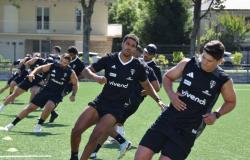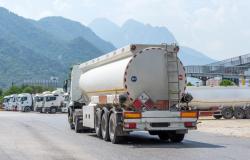Boeing’s Starliner Crew Flight Test mission is experiencing major technical complications aboard the International Space Station (ISS). NASA astronauts Suni Williams and Butch Wilmore, initially scheduled to return to Earth this Wednesday, June 26, find themselves facing an indefinite delay due to mechanical problems with the spacecraft.
A space journey marked by technical challenges
The radiant smiles worn by Suni Williams and Butch Wilmore at the beginning of June have faded somewhat. These two veteran NASA astronauts, currently aboard the ISS after their trip in Boeing’s Starliner spacecraft, face an unexpected situation. The ship supposed to bring them back to Earth encounters technical problems which compromise their return.
The return date, initially scheduled for Wednesday June 26, now seems uncertain. For at least four days, various ISS crew missions, including spacewalks, have been canceled to focus on resolving Starliner Crew Flight Test issues.
The technical failures of the Starliner
According to a report from Tweak Town, the spacecraft experienced no less than five helium leaks, including one even before liftoff. The latter would have been repaired in a hurry to avoid the cancellation of Boeing’s flight to space.
These multiple technical problems raise questions about the reliability of the Starliner and the rigor of the verification procedures before launch. Boeing and NASA engineers are currently working hard to resolve these issues and ensure a safe return for Suni Williams and Butch Wilmore.
NASA’s response to the situation
Faced with these challenges, NASA is taking a cautious and methodical approach. Steve Stich, director of NASA’s Commercial Crew Program, said:
“We are taking our time and following our mission management team’s standard process. We let the data guide our decision-making around handling small helium system leaks and thruster performance we observed during approach and docking. »
He added: “Furthermore, given the duration of the mission, it is appropriate that we conduct an agency-level review, similar to that conducted prior to the return of NASA’s SpaceX Demo-2 mission after two months in orbit, to document the agency’s formal acceptance of the process as planned.”
The current state of the Starliner
Despite these problems, NASA says the Starliner “performs well in orbit while docked with the ISS.” The space agency emphasizes that it is strategically using this additional time to:
- Clear the way for certain critical station activities
- Complete preparations for Butch and Suni’s return aboard the Starliner
- Gain valuable insight into system updates needed for post-certification engagements
Implications for the future of commercial spaceflight
This situation highlights the challenges inherent to commercial spaceflight. Boeing, which had hoped to catch up with SpaceX in the race for human spaceflight, is facing a potentially major setback. The problems encountered by the Starliner could have repercussions on:
- NASA’s Trust in Commercial Partners
- Boeing’s future contracts for space missions
- The schedule of the next manned missions to the ISS
The impact on astronauts and ISS operations
Although the situation is worrying, NASA reports that astronaut morale remains positive. Suni Williams and Butch Wilmore appear confident in the ground crews’ ability to resolve the issues and ensure their safe return.
However, this unforeseen delay has consequences for ISS operations:
- Rescheduling scientific experiments
- Readjustment of crew rotations
- Possible impact on station supply
Lessons to be learned from this incident
This situation highlights the crucial importance of:
1. System redundancy
- Having reliable backup systems is essential in space
- The ability to resolve problems remotely is essential
2. The rigor of pre-flight tests
- Verification procedures must be comprehensive and uncompromising
- Schedule pressure must not compromise safety
3. Operational flexibility
- The ability to quickly adapt to unexpected events is crucial in space
- Collaboration between agencies and private companies must be fluid
The return plan: a cautious approach
While the return scheduled for this Wednesday, June 26 will most likely be canceled, NASA and Boeing are developing a careful return plan. The priorities are:
- Comprehensively solve helium leak problems
- Check the integrity of all Starliner systems
- Perform full simulations of the undocking and re-entry process
- Wait for optimal weather conditions for the return
A crucial test for the future of commercial spaceflight
The challenges faced by Boeing’s Starliner represent a pivotal moment for the commercial space industry. How this situation is handled and resolved will have significant implications for the future of partnerships between NASA and private companies in space exploration.
Despite current difficulties, it is important to remember that spaceflight remains a complex and risky enterprise. Each challenge overcome provides new knowledge and improves the safety of future missions.
As Suni Williams and Butch Wilmore patiently await their return to Earth, the entire world watches with interest as this situation is resolved. Their safe return will not only be a relief to their families and colleagues, but also a crucial validation of the Starliner’s capabilities and the collaboration between NASA and Boeing.





